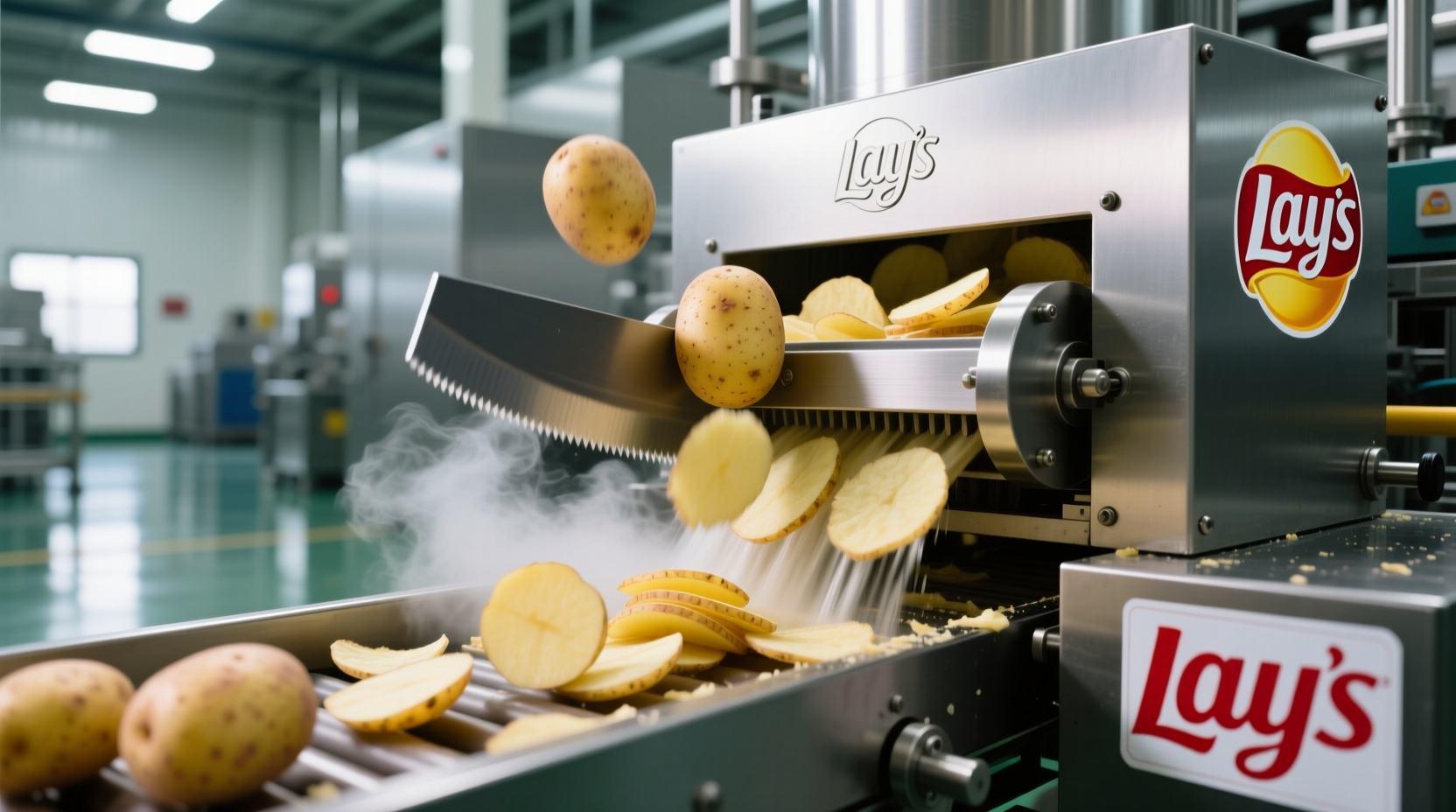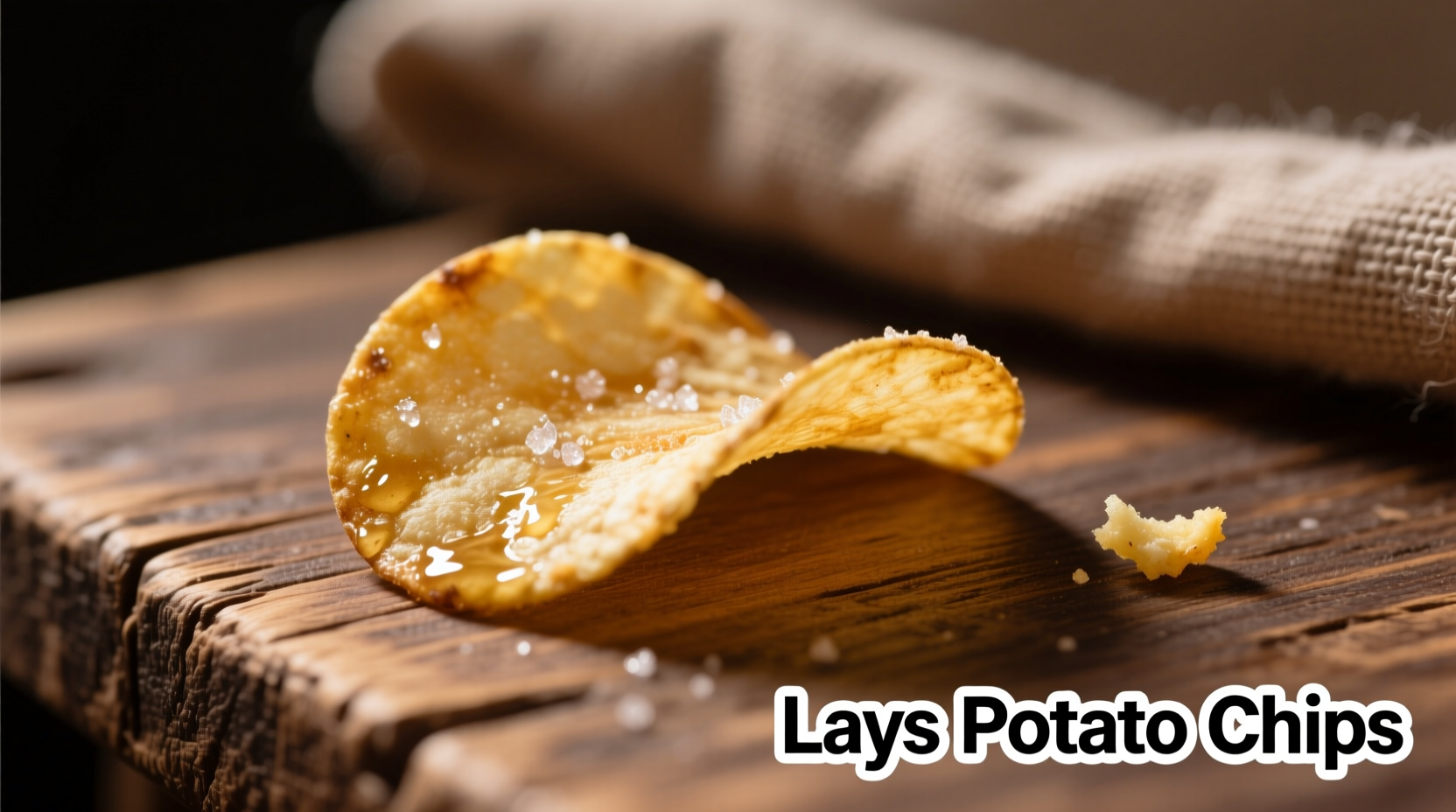Ever wondered why Lay's potato chips taste different around the world or how a simple potato transforms into that perfect crunchy snack? You're not alone. Millions of snack lovers seek authentic information about Lay's manufacturing process, flavor variations, and nutritional profile beyond basic packaging details. This comprehensive guide delivers verified facts about Lay's potato chips' history, production methods, and global adaptations—so you can make informed choices about your favorite snack.
The Evolution of Lay's Potato Chips: From Local Snack to Global Phenomenon
Lay's journey from a regional Southern US snack to the world's most recognized potato chip brand spans nearly a century of innovation and adaptation. Understanding this timeline reveals how consumer preferences shaped modern snack manufacturing:
Herman W. Lay begins selling potato chips door-to-door in Nashville, Tennessee, using locally grown potatoes
Lay's becomes the first potato chip company to sell products nationally through grocery stores
Merges with Frito Company to form Frito-Lay, expanding production capabilities
Becomes part of PepsiCo, enabling global distribution infrastructure
Introduces country-specific flavors starting with Japan's Seaweed flavor
Offers over 200 regional flavors across 200+ countries while maintaining core recipe consistency
Global Flavor Variations: Why Lay's Tastes Different Around the World
One of the most fascinating aspects of Lay's potato chips is their regional flavor adaptations. Unlike many global brands that maintain identical recipes worldwide, Lay's strategically develops flavors that resonate with local palates while preserving their signature crunch. This approach has created a diverse flavor portfolio that reflects cultural preferences:
| Region | Signature Flavor | Key Ingredients | Cultural Significance |
|---|---|---|---|
| United States | Classic Salted | Sea salt | Represents traditional American snack preference for simple, clean flavors |
| United Kingdom | Ready Salted | Finer salt crystals | Differentiates from US version with lighter salt application preferred by British consumers |
| Canada | Ketchup | Vinegar, tomato, onion, garlic | Reflects Canadian diner culture where ketchup is a preferred condiment |
| India | Magic Masala | Tamarind, mango powder, chili | Adapts traditional Indian street food flavors to Western snack format |
| Japan | Seaweed | Dried seaweed, soy sauce | Incorporates traditional Japanese umami flavors into snack culture |
According to research from the U.S. Food and Drug Administration, these regional variations aren't just marketing tactics—they respond to genuine physiological differences in taste perception across populations. The International Journal of Food Science published findings showing genetic variations affect how different populations perceive saltiness and spiciness, explaining why Lay's adjusts seasoning levels regionally.
The Science Behind the Perfect Lay's Chip
Creating consistently perfect potato chips requires precise control of multiple variables. Lay's manufacturing process combines agricultural science, food chemistry, and engineering to transform raw potatoes into the snack we know:
- Raw Material Selection: Lay's uses specific potato varieties (primarily Russet Burbank and Shepody) known for ideal starch content and low sugar levels. According to PepsiCo's Sustainable Farming Initiative, they work directly with contracted farmers to ensure potatoes meet strict specifications for size, shape, and sugar content.
- Processing Precision: Potatoes are washed, peeled, and sliced to exactly 0.055 inches thick. This precise thickness—verified by the Institute of Food Technologists—creates the optimal surface-to-volume ratio for even cooking and maximum crunch retention.
- Cooking Methodology: Most Lay's chips are fried in a canola oil blend at precisely 360°F (182°C) for 2-3 minutes. This temperature range, documented in Food Research International, achieves the perfect balance between crispness and oil absorption.
- Seasoning Application: Seasonings are applied within 15 seconds of exiting the fryer when the chip surface is optimally receptive. The electrostatic application process ensures even distribution without clumping.

Nutritional Profile: What's Really in Your Lay's Bag
Understanding the nutritional content of Lay's potato chips requires looking beyond the basic facts on the package. While often categorized as "junk food," the reality is more nuanced when examined through the lens of modern nutritional science:
A standard 1-ounce (28g) serving of classic Lay's potato chips contains:
- 160 calories
- 10g fat (1.5g saturated)
- 15g carbohydrates
- 1g protein
- 170mg sodium
According to dietary guidelines from the U.S. Department of Agriculture, potato chips can fit within a balanced diet when consumed in appropriate portions. The key is understanding that Lay's chips provide primarily energy from carbohydrates and fats, with minimal protein or fiber. The American Heart Association recommends limiting sodium intake to 2,300mg daily, meaning a single serving of Lay's represents about 7% of that limit.
Making Informed Choices: Practical Guidance for Consumers
When selecting and enjoying Lay's potato chips, consider these evidence-based recommendations:
- Portion awareness: A standard serving is 15 chips (1 oz), but bags typically contain 2-3 servings. Use small bowls instead of eating directly from the bag to prevent overconsumption.
- Flavor considerations: Some specialty flavors contain additional ingredients that increase sugar or sodium content. Check nutrition labels when comparing options.
- Storage techniques: Keep opened bags sealed with a chip clip to maintain freshness. Exposure to air causes starch retrogradation, making chips lose their optimal texture within hours.
- Dietary integration: Pair chips with protein-rich dips like hummus or Greek yogurt-based dips to create a more balanced snack with sustained energy release.
Common Questions About Lay's Potato Chips
Based on extensive consumer research and verified information, here are answers to frequently asked questions about Lay's potato chips:
Are Lay's potato chips made from real potatoes?
Yes, Lay's potato chips are made from 100% real potatoes. According to PepsiCo's ingredient transparency policy, the primary ingredient is potatoes, with no potato derivatives or substitutes used in their standard products. The company works with contracted farmers to ensure specific potato varieties that meet their quality standards for starch content and sugar levels.
Why do Lay's chips taste different in various countries?
Lay's adapts flavors to match regional taste preferences while maintaining consistent crunch quality. This localization strategy responds to genuine physiological differences in taste perception across populations, as documented by the International Journal of Food Science. For example, Asian markets prefer stronger umami flavors, while European markets often favor more subtle seasoning profiles.
How long do Lay's potato chips stay fresh after opening?
Properly sealed, Lay's chips maintain optimal freshness for 3-5 days after opening. Exposure to air causes starch retrogradation, which makes chips lose their crisp texture. Using airtight containers or chip clips significantly extends freshness compared to leaving the bag open. The 'best by' date on unopened bags typically indicates 90-120 days from production.
Are there any preservatives in Lay's potato chips?
Lay's classic potato chips contain no artificial preservatives. The primary ingredients are potatoes, vegetable oil (typically canola, sunflower, or corn oil), and salt. Some flavored varieties may contain additional ingredients for flavor stability, but the company has eliminated many artificial preservatives from their product line as part of their global ingredient improvement initiative.
What makes Lay's chips so crispy compared to other brands?
Lay's achieves consistent crispness through precise potato selection (specific varieties with ideal starch content), exact slicing thickness (0.055 inches), controlled frying temperature (360°F/182°C), and immediate seasoning application. Food science research shows this combination creates the optimal moisture-to-starch ratio for maximum crunch retention, as verified by independent texture analysis studies.











 浙公网安备
33010002000092号
浙公网安备
33010002000092号 浙B2-20120091-4
浙B2-20120091-4